




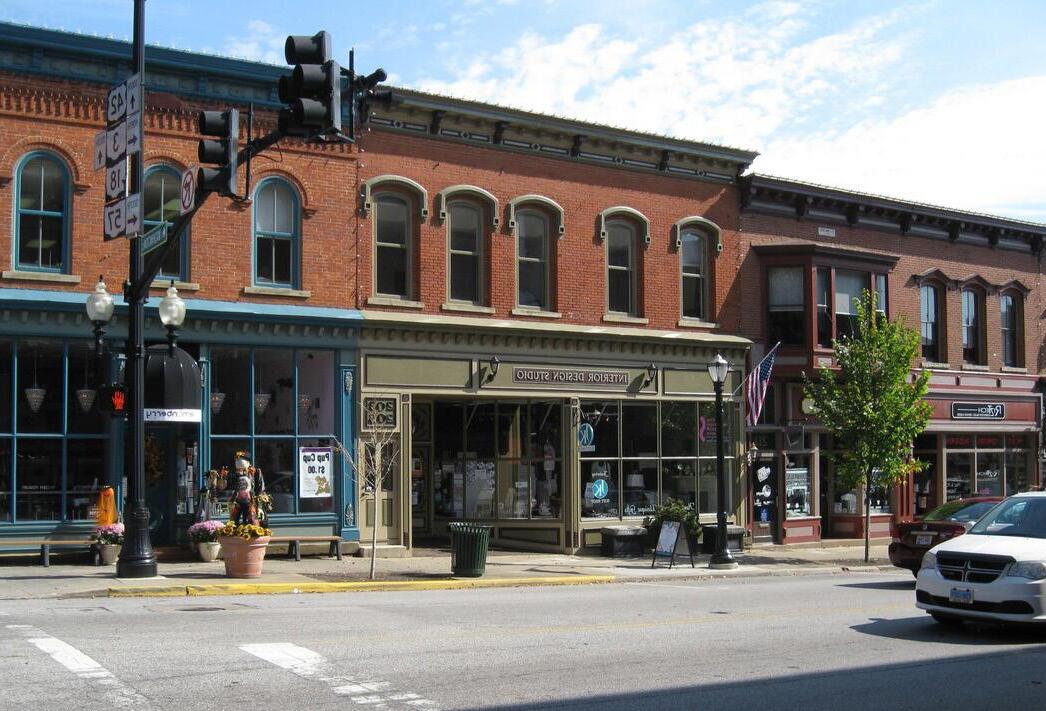
The Medina Public Art and Placemaking Plan was created by Designing Local and Main Street Medina. This plan focuses on the South Town district of Medina, aiming to define the neighborhood’s unique identity that is complementary to the Uptown Historic district.
Chapter One outlines the vision for this district and any desired outcomes for placemaking and public art initiatives. Chapter Two of this document defines public art strategies, typologies, and placement, synthesizing industry best practice and guiding the implementation of the plan and future investments in public art. Chapters Three and Four describe specific public art and placemaking recommendations curated for South Town. The final chapter suggests programmatic interventions to consider for the future of Medina.
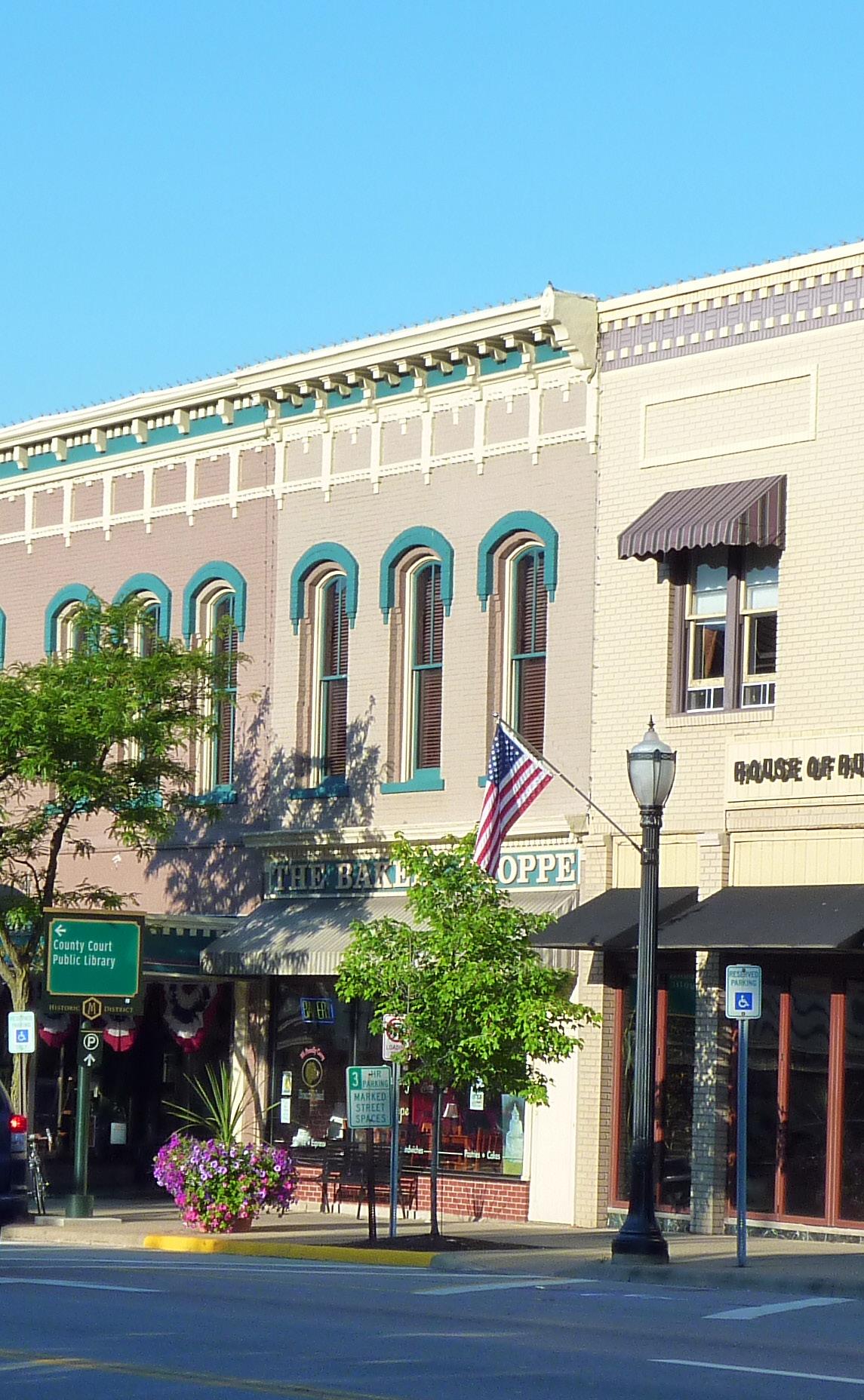
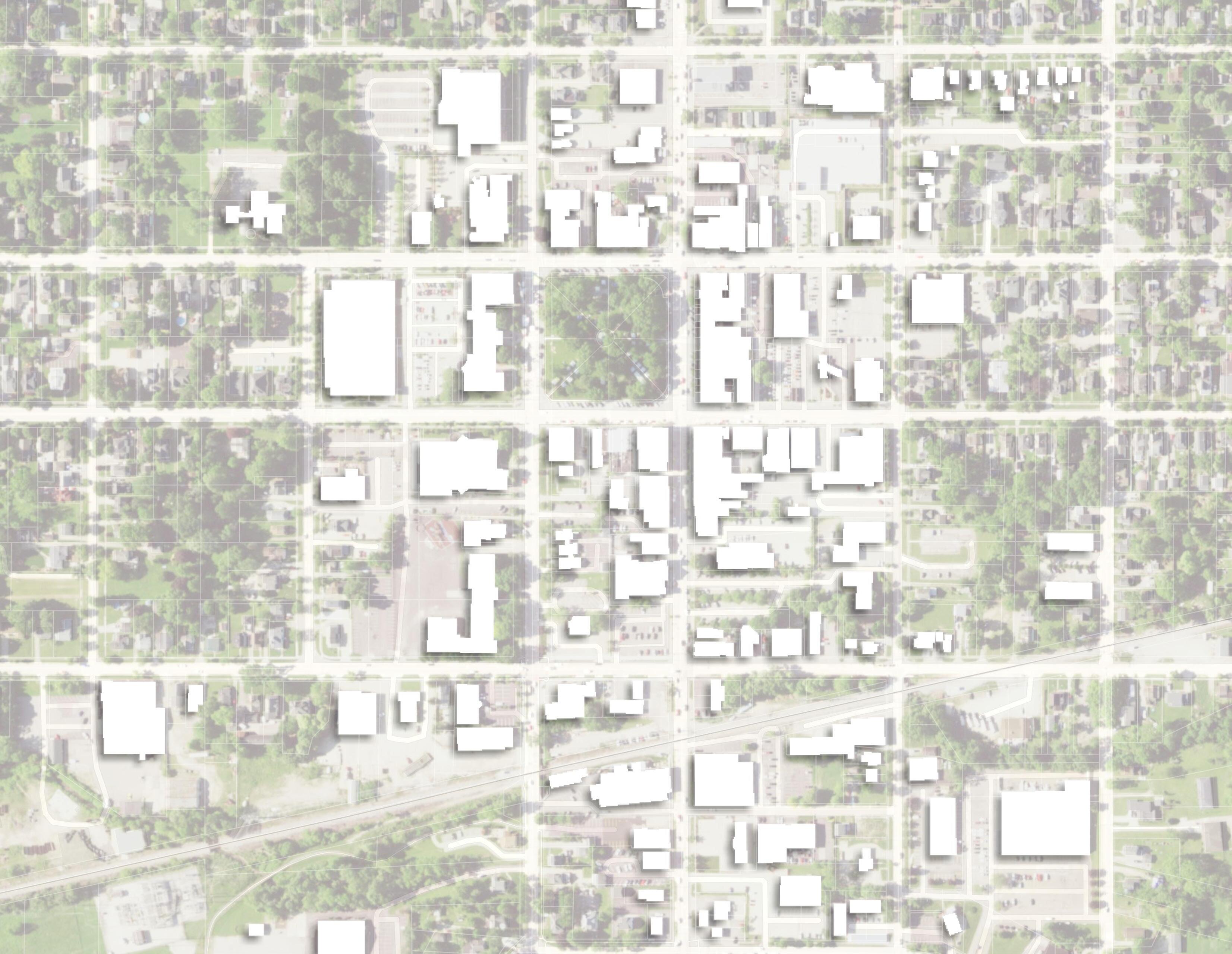
As the southern gateway into the Uptown Historic district, the South Town district is an important crossroads for tourism, economic development, culture, and community pride. The South Town district’s history in multiple industries—including grain, freight railways, upholstery, metal smithing, marble, and beyond—contextualizes its placemaking and public art considerations. A cohesive public art strategy has the ability to define a place’s borders and invite in residents and visitors. This plan’s vision for the South Town district of Medina is to create a place that celebrates its industrial past through innovative public art and lively placemaking, while establishing a natural connection between Medina’s Uptown Historic and South Town districts.
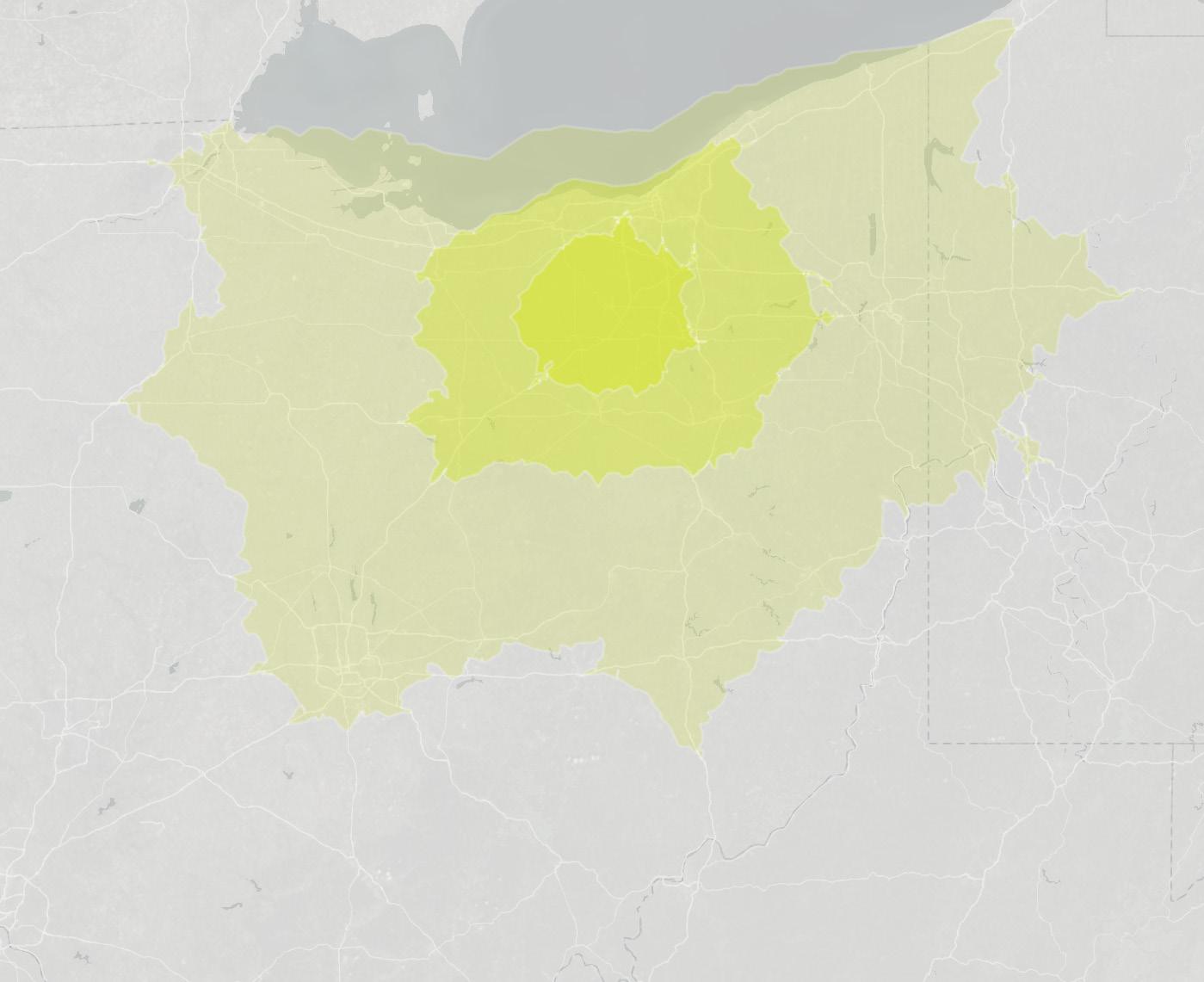
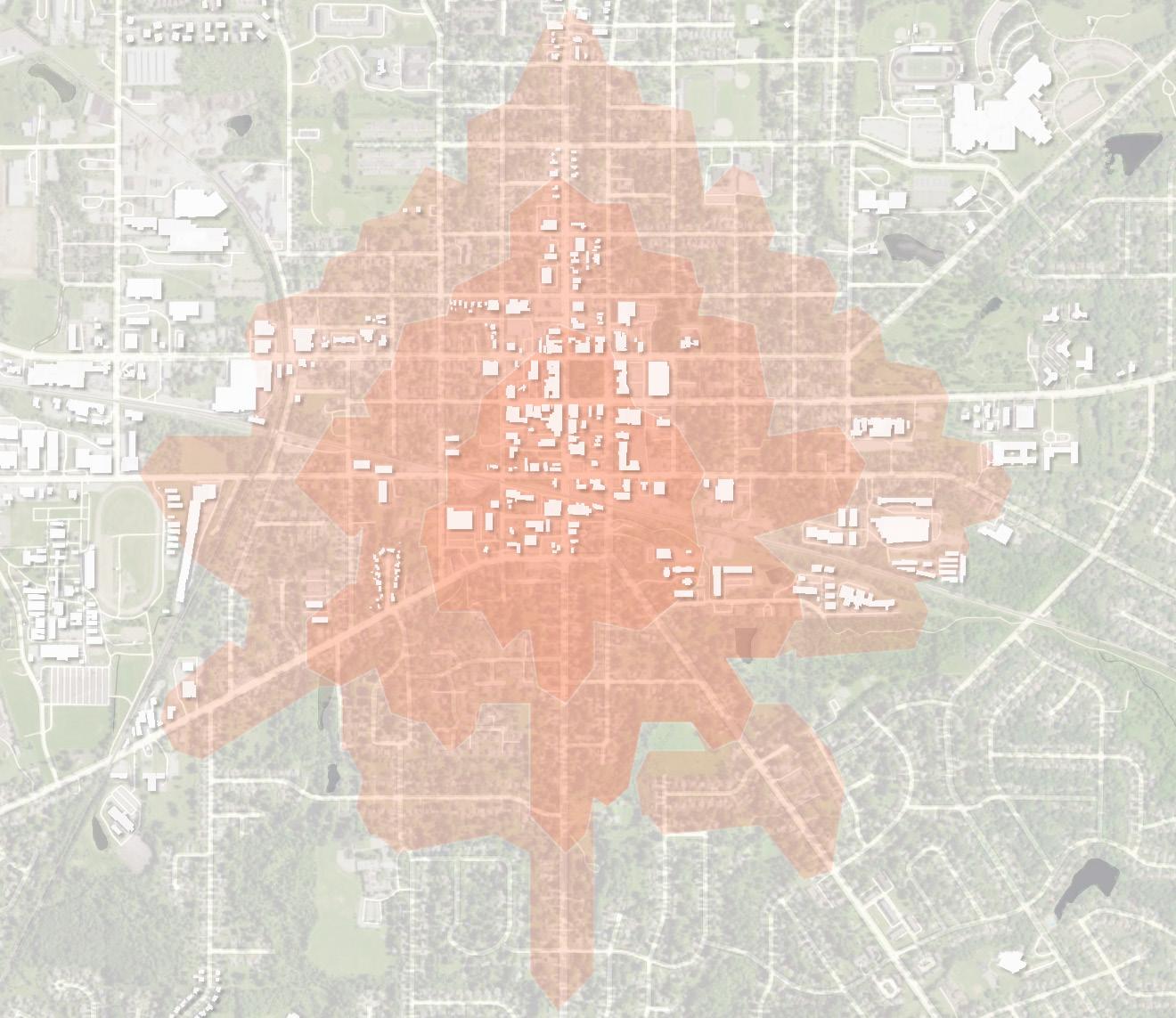
The historic center of Medina is a vibrant, walkable community at the intersection of several major arterial roads. The Uptown and South Town districts are traversable within a five-minute walk shed, with residential areas able to reach the town center within a 15 minute walk.
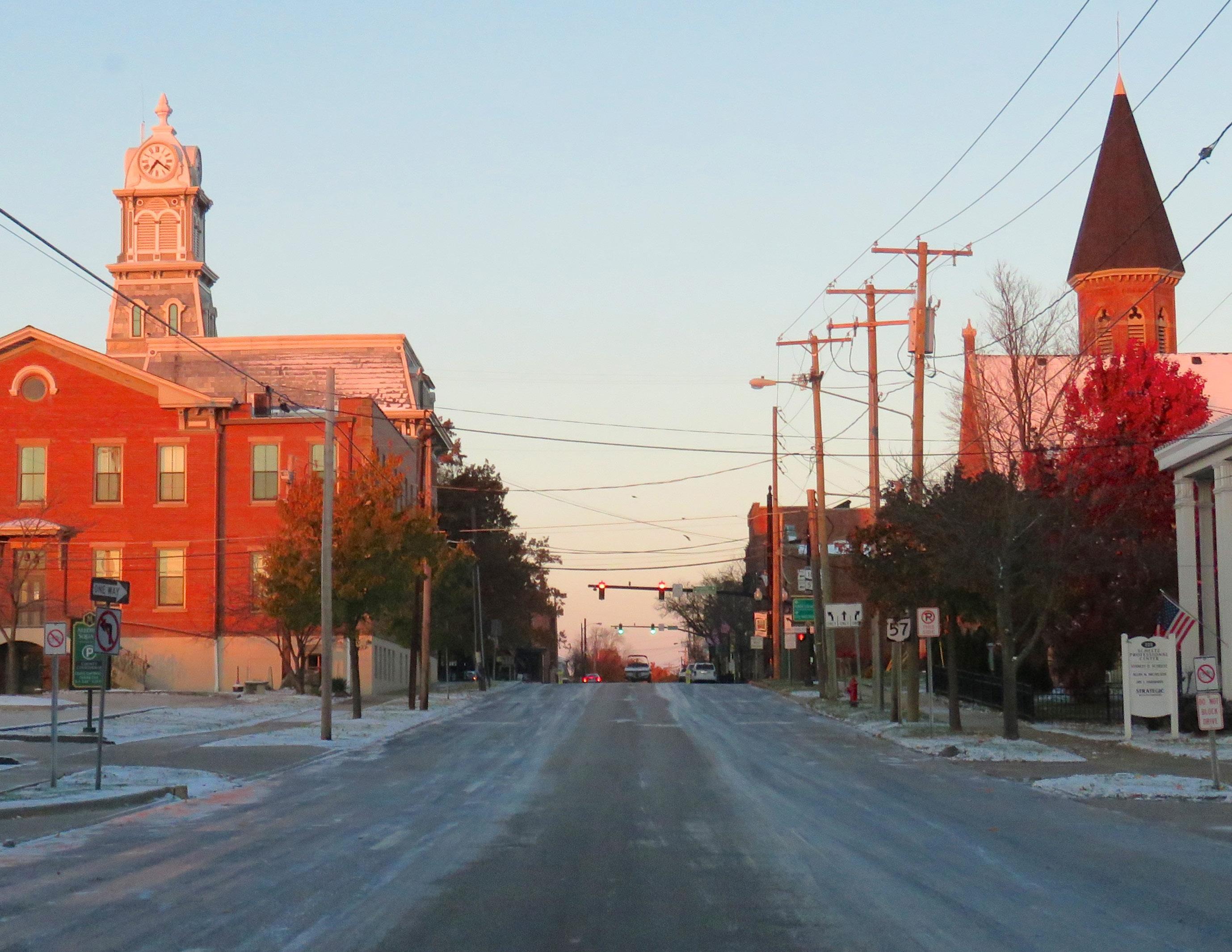
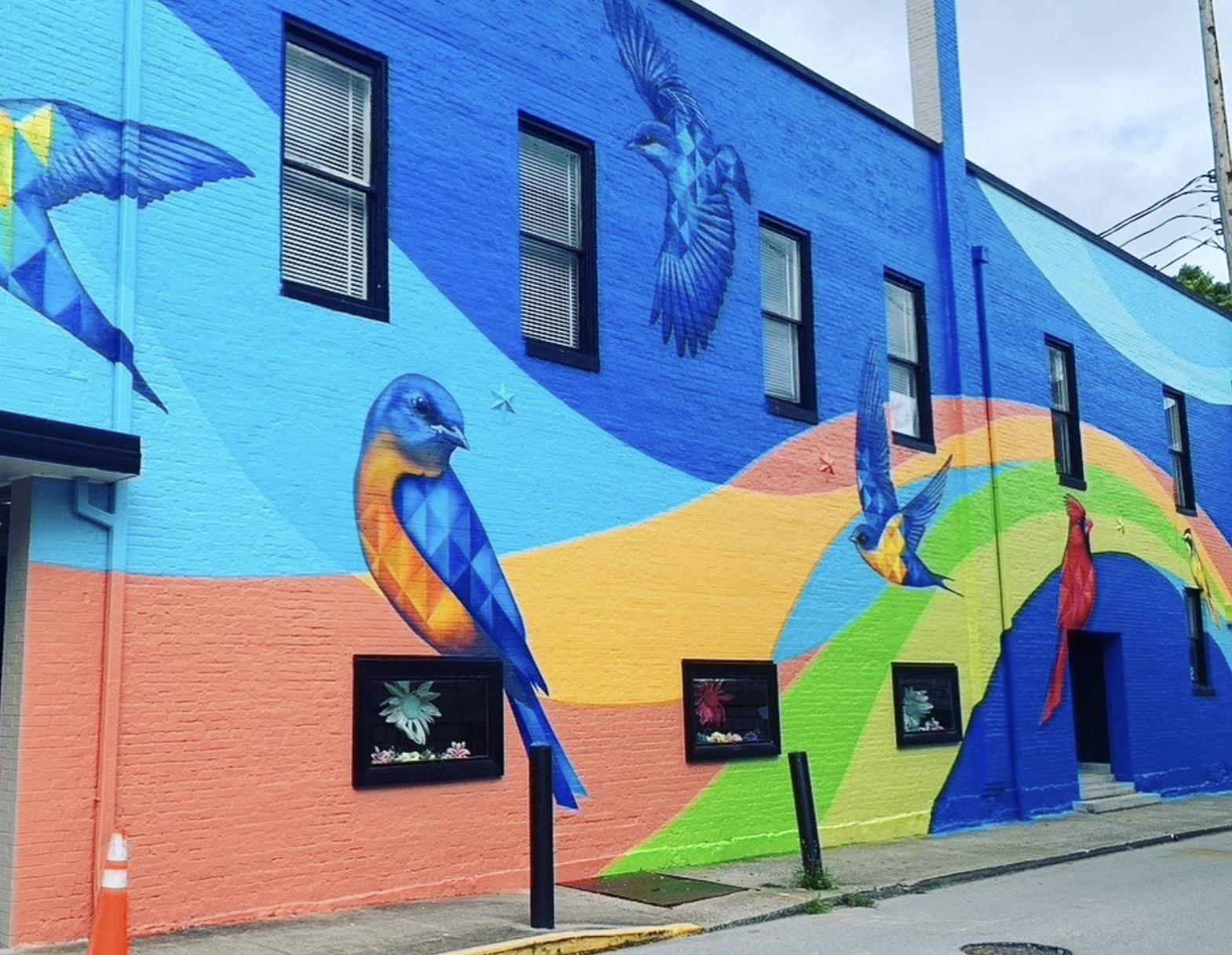
Public art projects can have very positive effects on neighborhoods, and communities in general. This section outlines different types of art that could be considered, engaging opportunities for the public to be involved in art, and strategies to select public art sites.
An iterative project is one that has many parts united by the same theme. For example, a park may commission an artist to create a series of sculptures placed in various locations around the park, united by the theme “Larger than Life Flowers.” Another example could be a recurring design motif or symbol placed in a range of sites around a town center. If a city’s symbol is a beehive, then an artist could design a series of beehive images to be printed on vinyl stickers and placed around a city. Iterative projects establish a “trail” for the community to follow across a predetermined area, making them a great option for retail areas, parks, or historic town centers.
Single-presentation public art projects are those that do not repeat in multiple locations and their compositions are limited to one site. Examples of these kinds of projects include, a large-scale sculpture commissioned for a city hall lawn; a unique mural on the facade of a community center; or light installation that is engineered to complement the detailed architecture of a historic building. Singlepresentation projects may be temporary, or long-term, and they are primarily characterized by their function as a landmark in public space
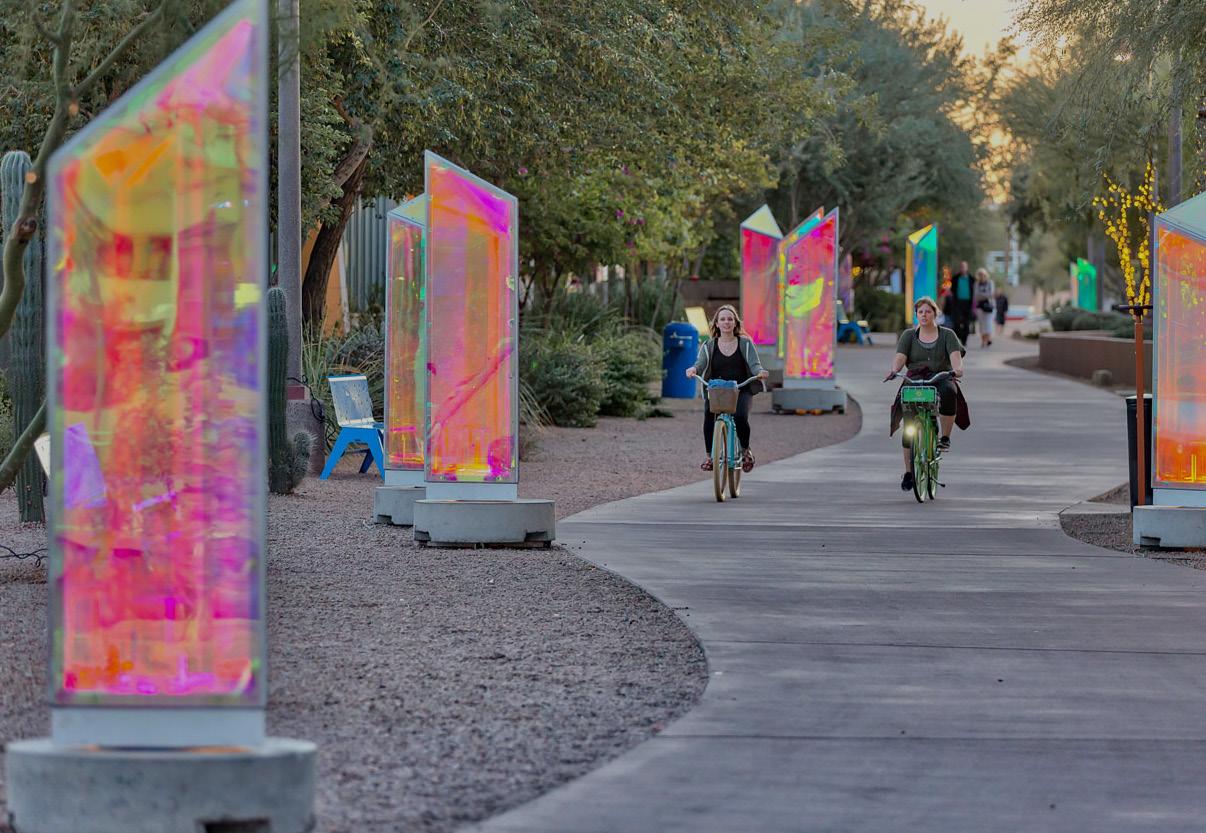
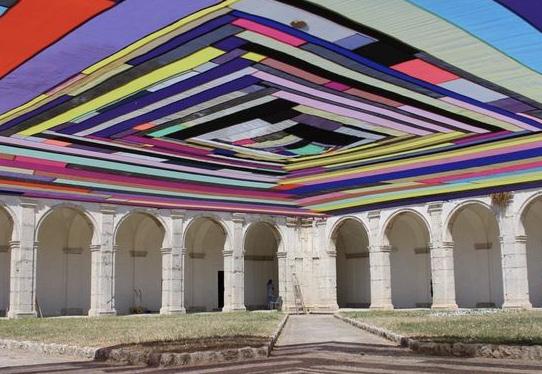
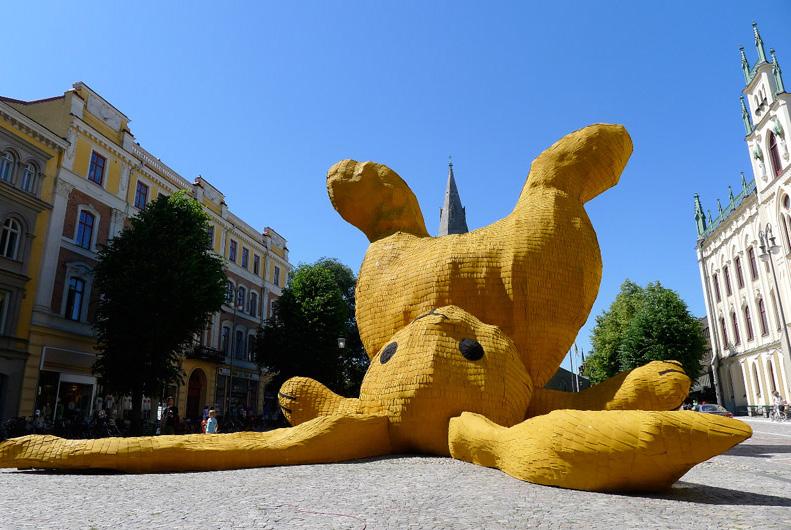
Sculptures are three-dimensional original artworks that can be made of any material that offers structural stability and durability. Sculptures are scaled to their surroundings and typically do not move from the location in which they are installed.
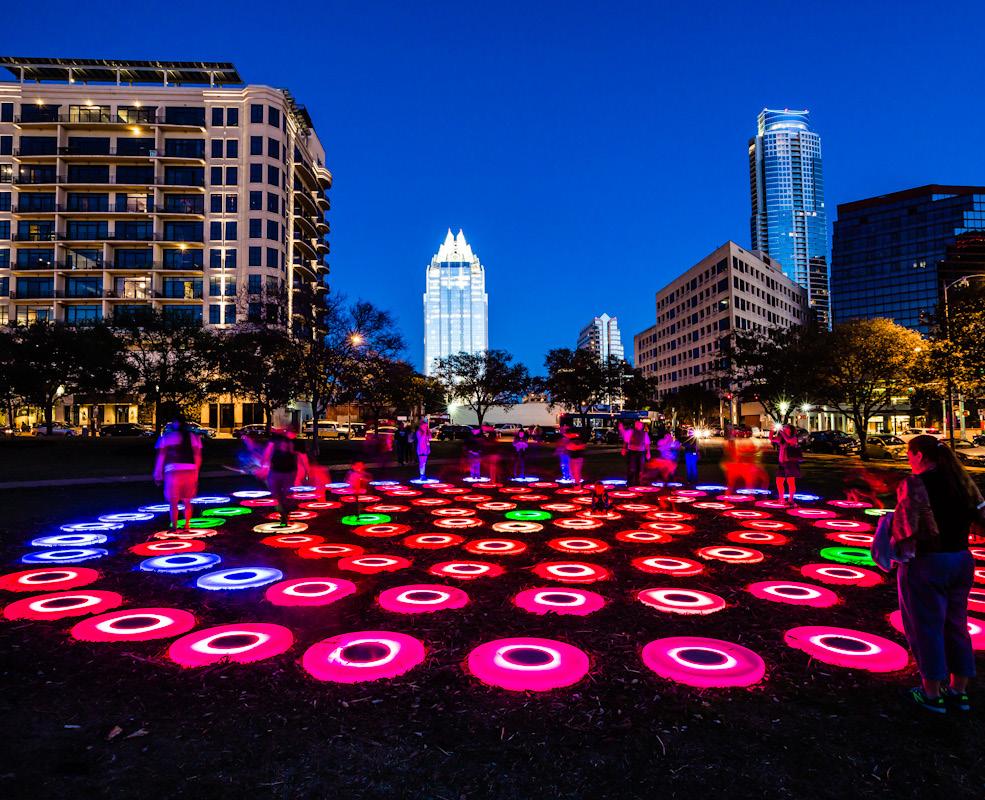
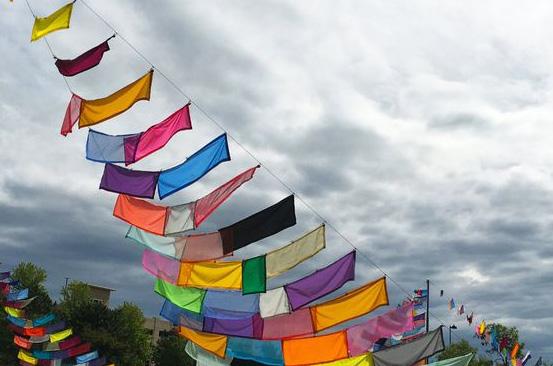
Fiber art is any kind of artwork that uses natural or synthetic fiber materials as the primary component of its overall composition. Fiber art can take the form of wall hangings, tree wraps, suspended sculptures, and beyond. Examples of fiber materials include fabric, yarn, polyurethane materials (like tarp), and mesh.
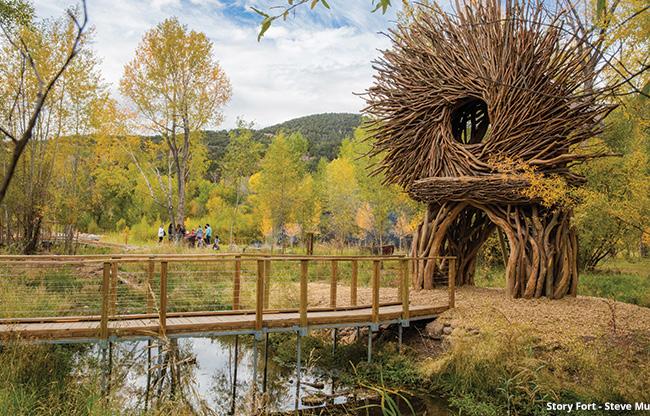
Environmental art is any kind of outdoor public art that uses materials with a direct connection to nature, landscaping, or organic materials. Environmental art can be temporary or permanent, and its scale can vary. Its thematic context addresses environmentalism and sustainability.
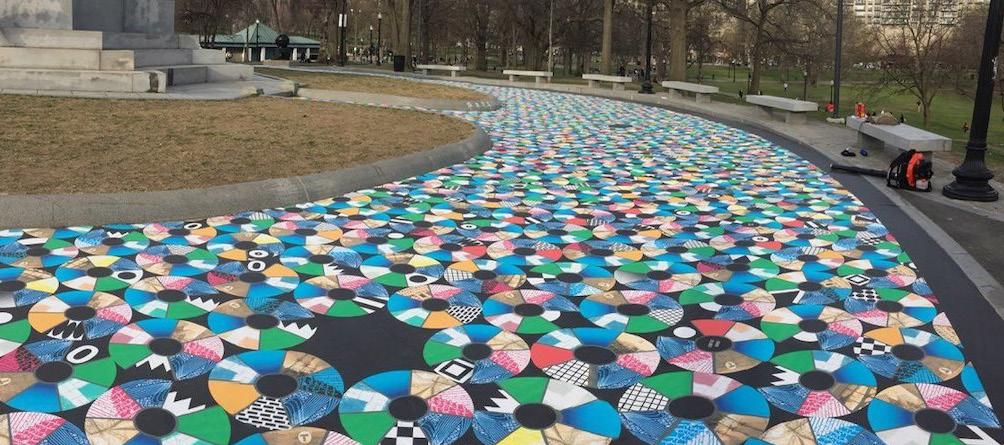
Artists use lighting in creative and interesting ways in order to manipulate the built environment with limited physical impacts. Light installations may be used on existing buildings, in parks on substantial landscape features, or as part of a larger installation of sculpture. They may be especially useful and impactful when used in infrastructure projects.
Murals are large-scale, two-dimensional compositions that can be: 1) painted onto the surface 2) graphic reproductions printed onto vinyl that is adhered to a surface, or 3) painted onto a panel that is affixed to a building. Environmental conditions, artwork display duration, artist ability, timeline, and budget are all considerations for which mural application style is suitable for a project.
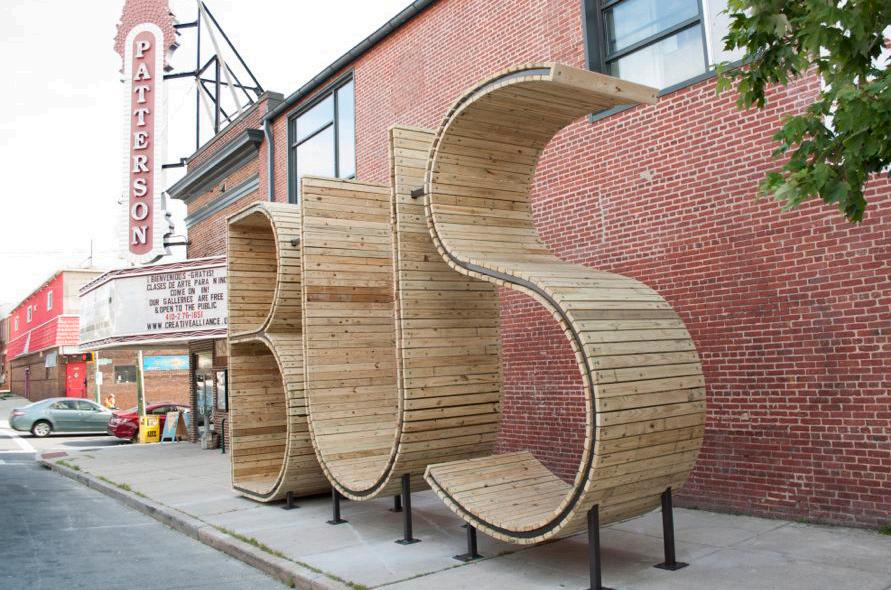
Functional Art is the ordinary infrastructure that has been reimagined and designed by an artist. Some possible options for functional art installations include bike racks, benches, play equipment, medians, subdivision walls, trash cans, transit stops, storm drains, manholes, monument signage, sidewalk treatments and more.
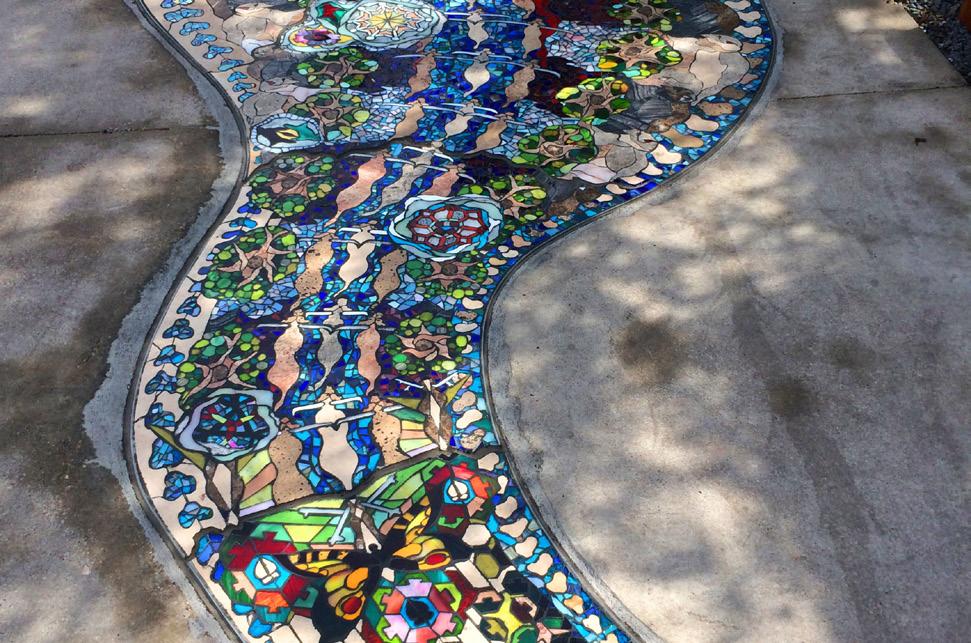
Site-specific art is artwork that is aesthetically, conceptually, and/or thematically connected to the unique circumstances, culture, history, and environment of a particular site. Site-specific art can take many forms, and may be permanent or temporary. In this approach to art-making, artists
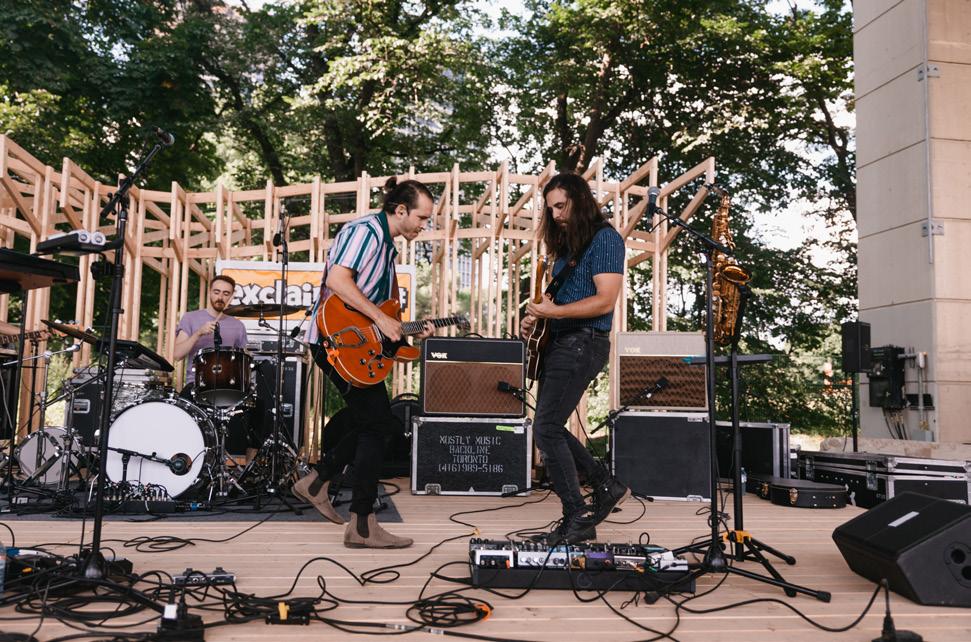
Artists use lighting in creative and interesting ways in order to manipulate the built environment with limited physical impacts. Light installations may be used on existing buildings, in parks on substantial landscape features, or as part of a larger installation of sculpture. They may be especially useful and impactful when used in infrastructure projects.
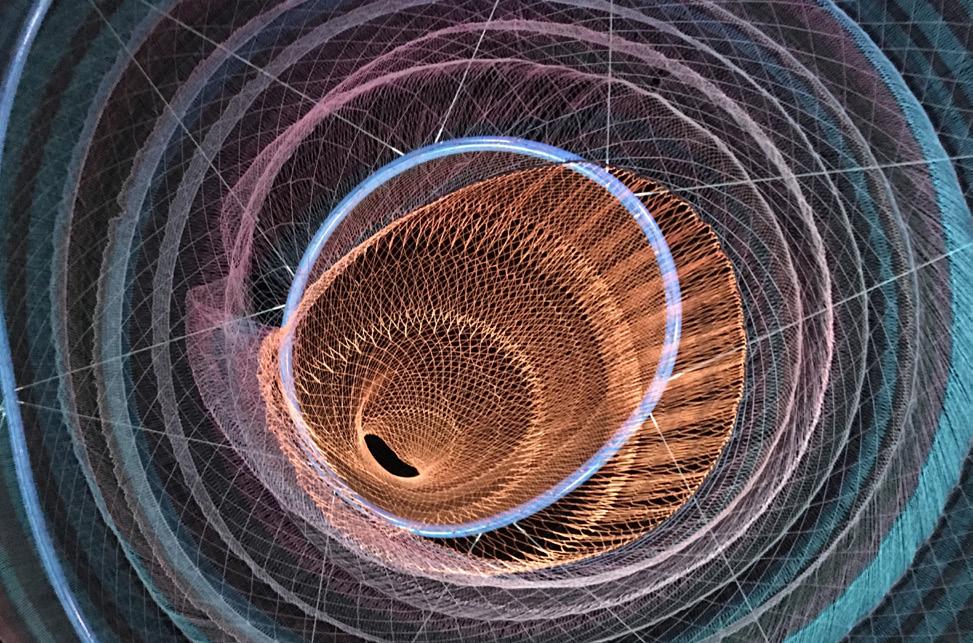
Multimedia installations may combine many other art types in ways that expand the imagination. Video, lighting, sculpture, murals, and more can be combined to make multimedia installations. Multimedia installations are especially useful for temporary or pop-up installations.
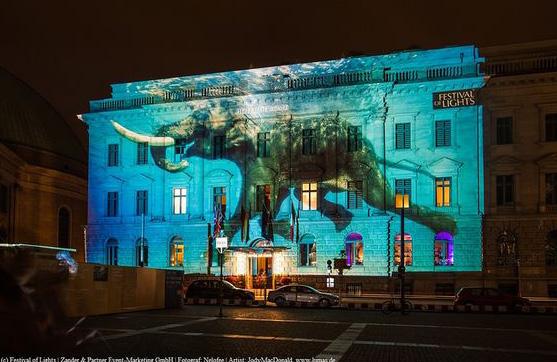
Time-based Media is art that is created using photography, video, film, and/or audio whose composition transpired over a period of time. Timebased media artwork has clearly-defined beginning and ending points. This kind of artwork may run on a loop and is suitable for environments whose conditions are not suitable for traditional artwork materials.
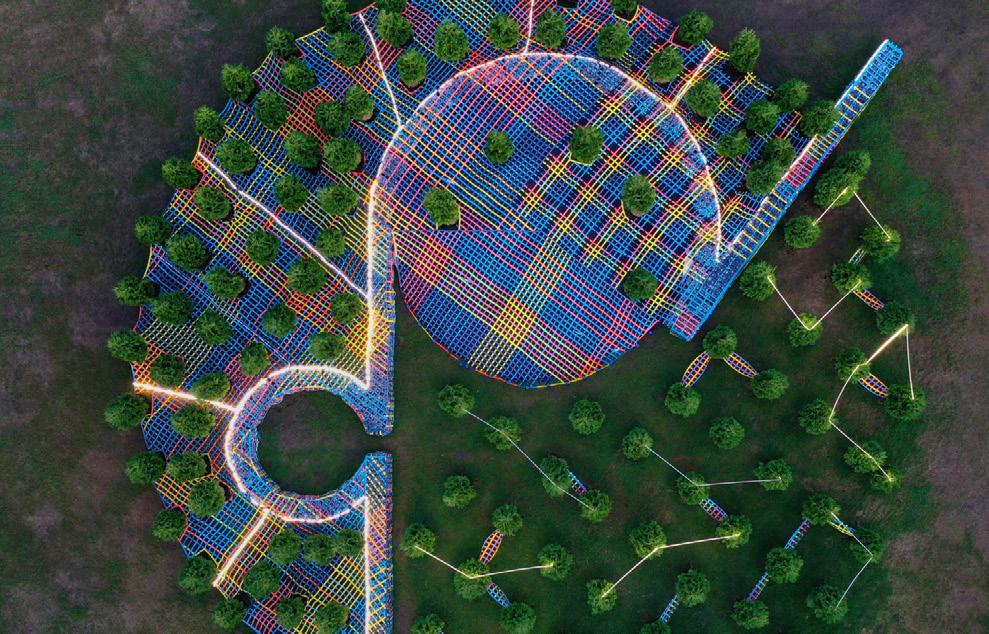
Mosaics come in many shapes and sizes and include glass or ceramics. The relative flexibility of the application of mosaics responds well to many art contexts. Mosaics can be inlaid for flooring or wall elements, or they may be a component of a sculpture. Terrazzo floors can be considered as a kind of mosaic installation.
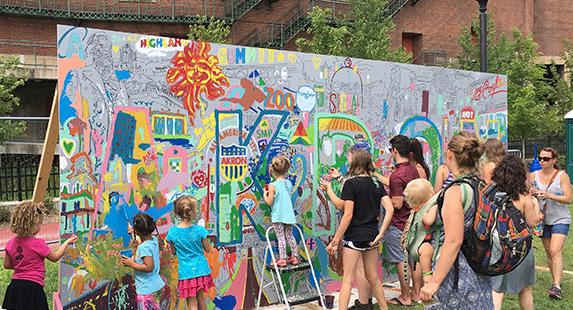
An artwork’s life span is either the amount of time its materiality will allow it to be displayed (either for artwork safety or artwork integrity reasons), or the object’s display period, as determined by a contract between the City and the artist, whichever is shorter.
Temporary: 0 - 2 years
Short Term: 3 -10 years
Medium-Term 11 - 25 years
Long-Term 26+ years
Temporary Art are public art interventions that exist in a community between one day and two years. Some ideal locations for temporary installations include construction sites, sidewalks, alleyways, parks, and temporarily empty spaces and storefronts. Temporary art can be cost effective and easy to execute, providing opportunities for additional artist engagement. In whatever form, its short lifespan gives energy to the space and drives excitement among the community. Temporary may also invite collaboration, be it with local schools or community groups, to rotate artwork over short periods of time. In addition to robust, regular performing arts programming in public spaces, public performances could also appear in temporary or pop-up format.
Though pop-up art can be similar to temporary art in the way that it is only viewable for a short time, pop-up art has the ability to truly catch the audience by surprise. Pop up performances, specifically have a lasting impact on a community by creating a sense of surprise and joy in unexpected places.
Participatory art involves the community or a public group in the process of art-making, as guided by an artist. Artwork that emerges from a participatory experience enhances and celebrates its process and participants over short or long periods of time. Collaborative art pieces engage people to generate feelings of community pride and ownership.
Live Artmaking is a form of planned public engagement in which artists create works in public settings. These experiences encourage public appreciation of artists’ processes and skills, and provide opportunities for enriching encounters with local creatives in familiar community settings.
Identifying sites for public art is a collaboration between the public, artists, City staff, and community stakeholders. Proposed sites may inform the conceptual or aesthetic direction of an artwork, or the artwork may inform placement. In either case, considerations for site placement include:
• Visibility from public right-of-way: Who will see the artwork? Will private businesses be impacted by the placement? Will transit and/or pedestrians be impacted by the placement?
• Permitting: What approvals or permits may be required? Are there limits on words or signs that this artwork may display?
• Public accessibility: Can the public experience this artwork close-up or far away? Will the artwork pose any safety concerns, such as climbing, touching, etc.?
• Appropriate, or desired artwork materials: Will a certain material be too reflective? What are the maintenance requirements for the material? Will it be expensive to replace or repair?
• Any required artwork themes: Should the artwork represent a nearby landmark or facility? Should this artwork represent a certain person or community
• Landscaping and lighting considerations: Will the landscaping obstruct the artwork? Is nighttime lighting required?
• Seasonality considerations and duration: Will the artwork be permanent or temporary? Will weather affect the artwork? Does the placement of this artwork affect a
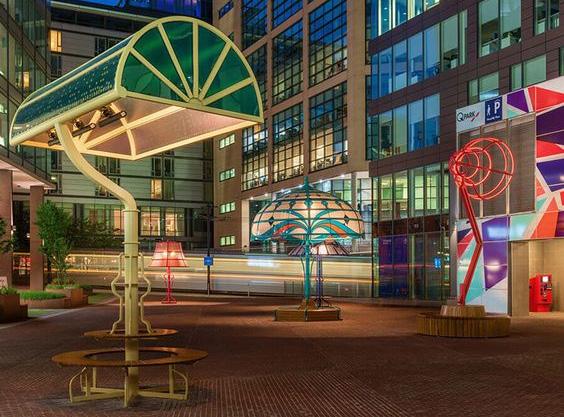
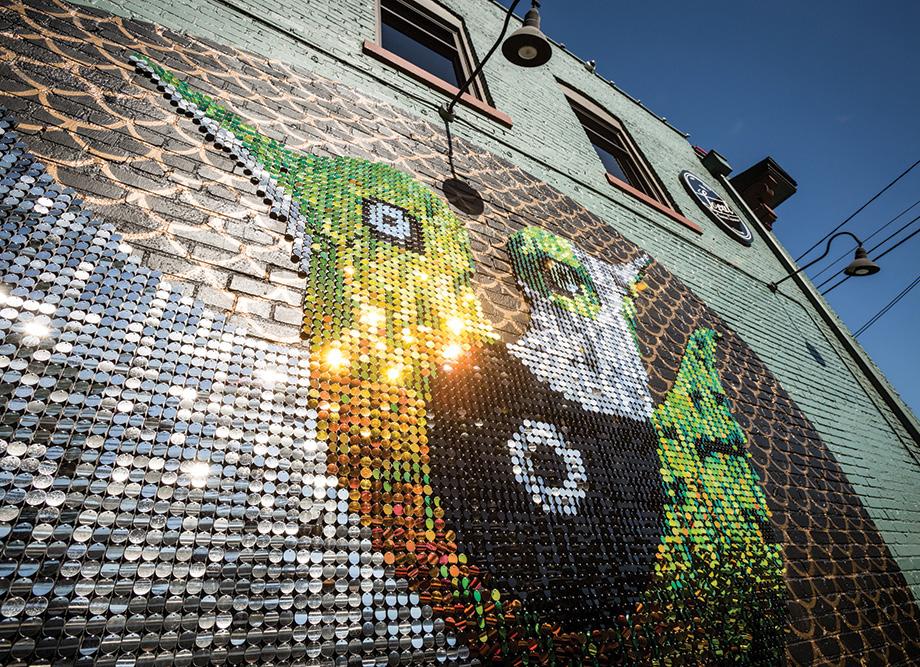
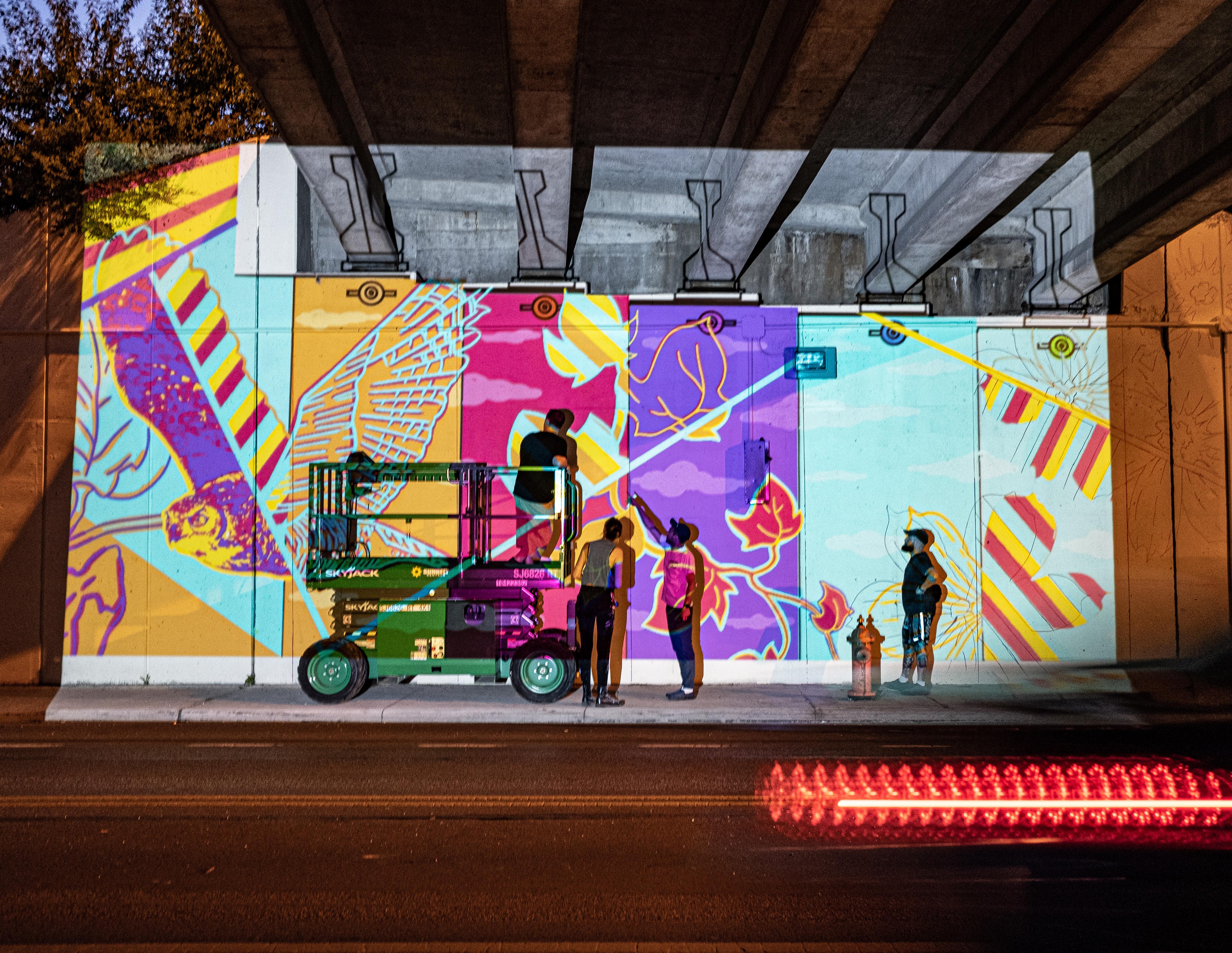
Public art in the South Town district has the potential to enliven the neighborhood and its character, transforming the South Town district into a desirable, walkable place with a distinct identity from the Uptown Historic district. The recommendations in this chapter are tailored to the South Town district’s history and landscape.
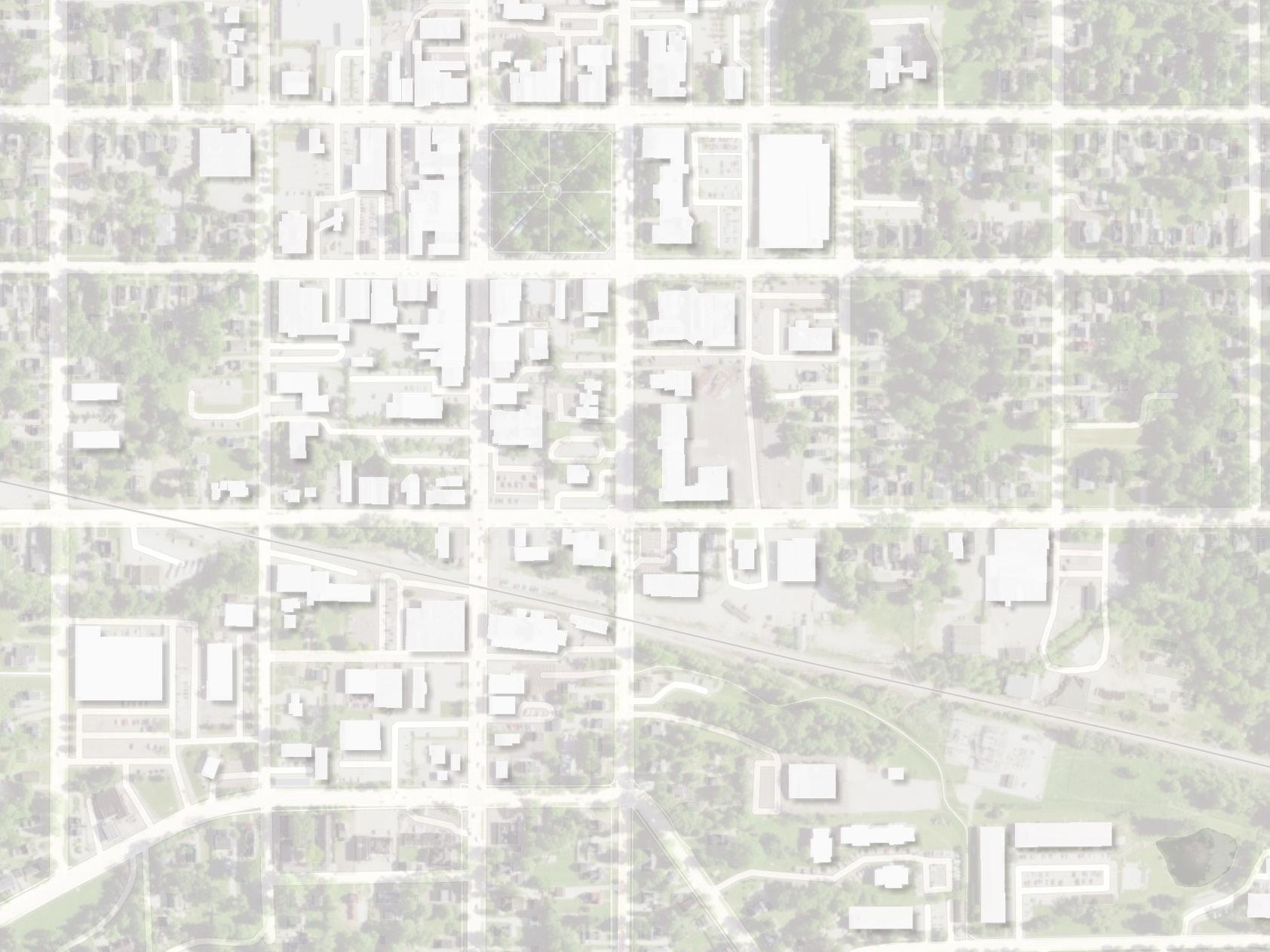
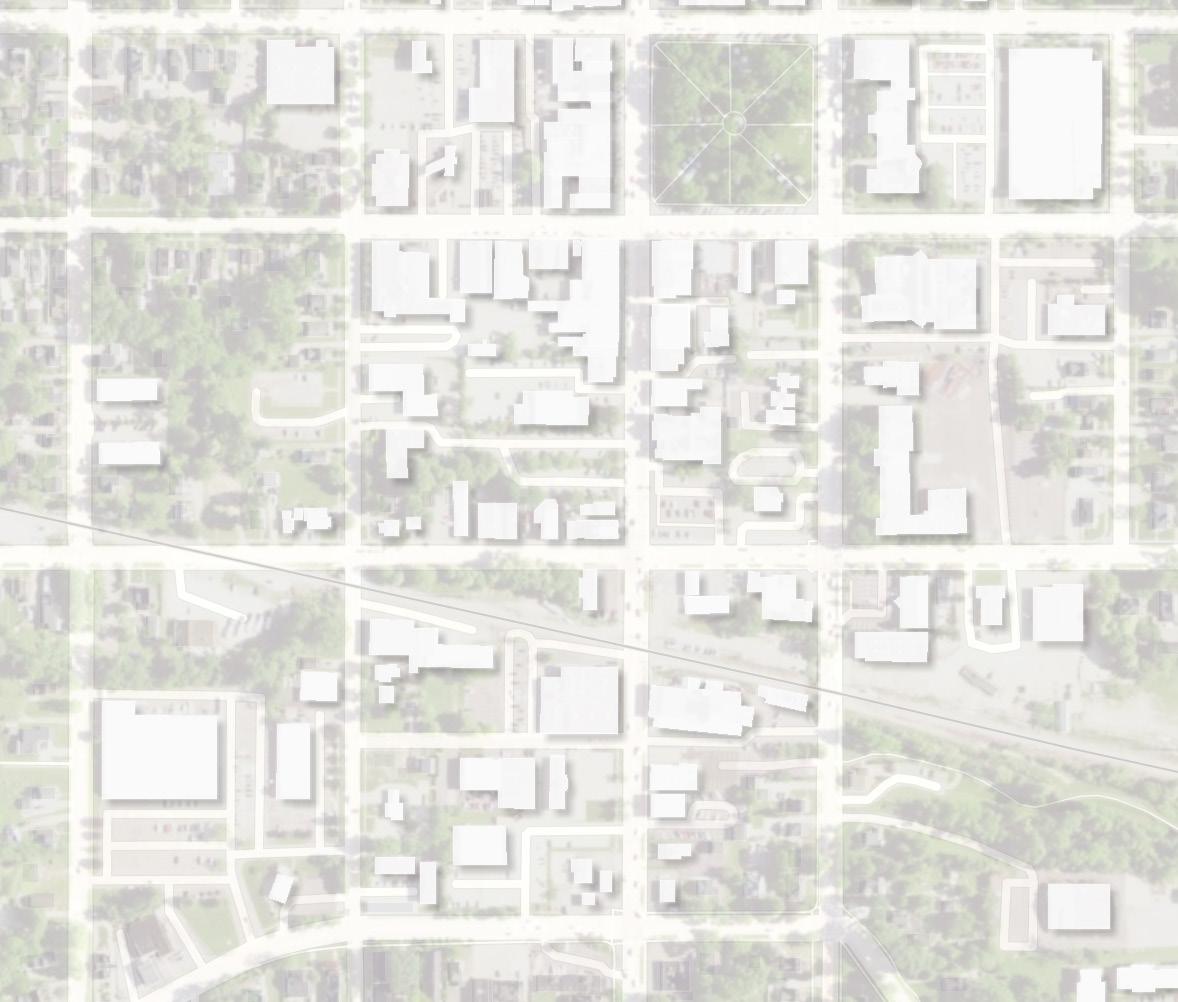
Placemaking is the physical embodiment of what a community is and strives to be, and how people want their spaces to be experienced and understood. Through placemaking, communities infuse their built environment with soul and vibrancy, underlining their shared values and fostering a sense of identity that all who experience the space can feel and understand. Placemaking can be fun, tactical, creative, and utilitarian; it knits a place’s built environment together and encourages people to use and experience spaces in new ways. Placemaking can include everything from community programming to site fixtures and furnishing to large-scale public art, with all interventions intended to create beacons for activity in public spaces.
Public art can be a powerful tool in placemaking efforts. Though it comes in many forms, all public art has one thing in common it is available to be seen, heard, and/or felt by everyone. Art can be completely unique to a place and representative of a community. Main Street Medina has chosen to create this plan to support placemaking across its community. Strategies for placemaking and public art in the South Town district are described in the plan’s subsequent chapters.
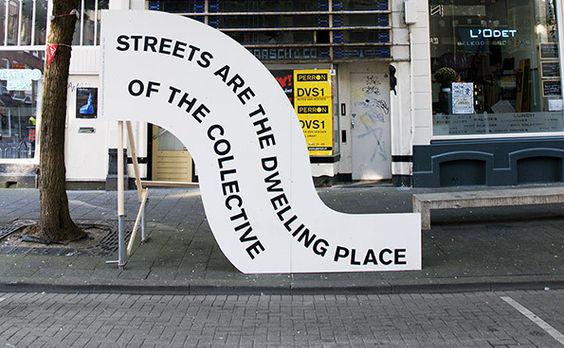
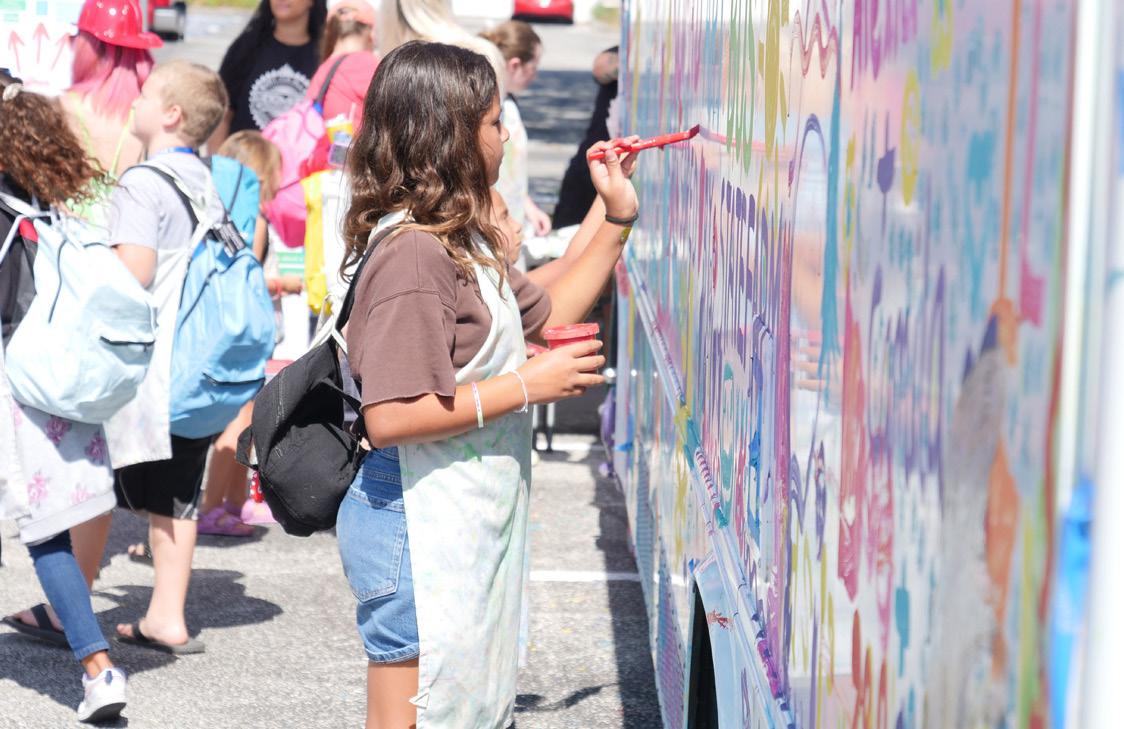
Murals provide an opportunity to transform blank sites into vibrant spaces. As a relatively quick and highly impactful way to bring public art into a city’s built environment—including sidewalks, crosswalks, streets, walls, and beyond—murals can celebrate a place’s history, tell memorable stories of residents, and be a source of beauty.
• Scale - Who will be the intended viewer or audience? A mural intended for pedestrians may be of a different scale than one intended for automobile drivers or cyclists along a bike trail.
• Accessibility - Are there opportunities to engage those who are visually impaired or otherwise not able to view the mural?
• Maintenance - What are the long term maintenance implications of the design? Is it easily repairable?
• Longevity - What is the expected life span of the mural? Is it intended to be a temporary (0-2 years) or short term (2-5 years) installation?
• Experiential Elements - Is there a potential for additional elements that could be added to enhance the experience of the viewer such as virtual (VR) or augmented (AR) reality elements, audio elements either on site or online, instagram or social media interactions or other opportunities?
• Historic Preservation - Is this mural intended for a historic building? If so, painting unpainted finished masonry is generally considered an inappropriate treatment. Explore other options such as painted panels or applied vinyl.
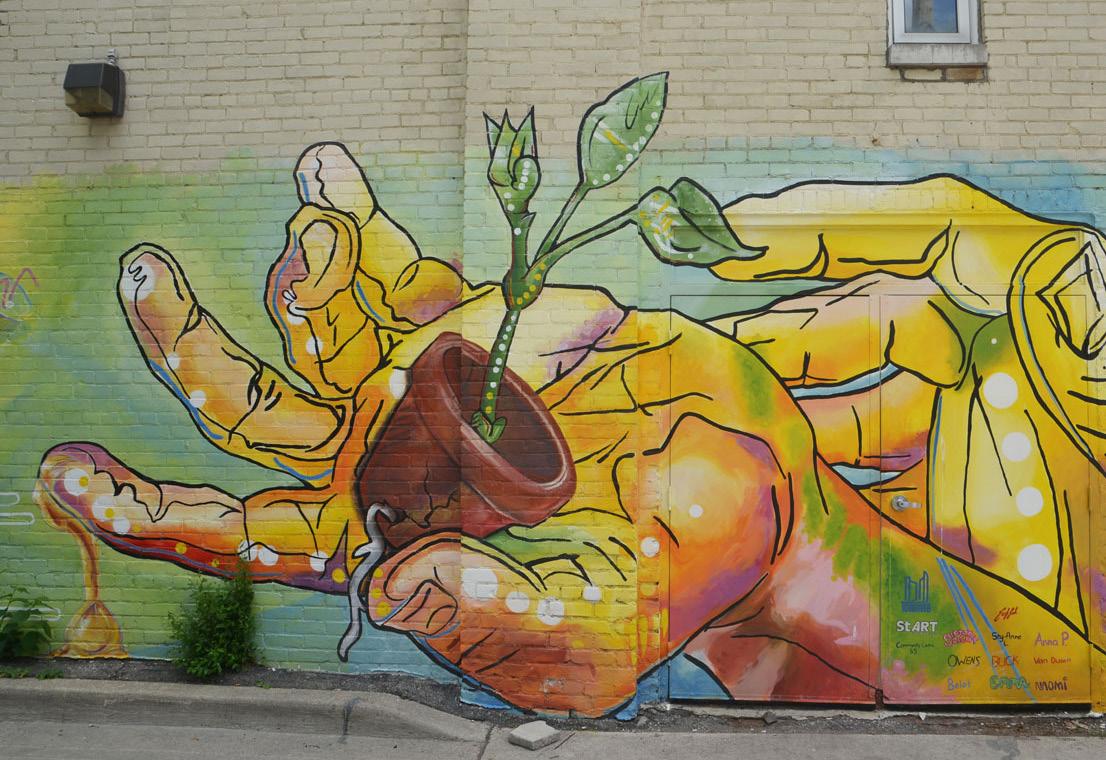
Though there may be positive benefits for a property owner as a result of the creation of a mural on their building or in the public right-of-way, having a direct correlation between the content of the mural and the property or any business housed in the property is not suggested. We also recommend to state in request for proposals that the murals should not include designs that would be considered inappropriate and/or indecent by community standards. While not relating to content, these design considerations can help ensure a successful project.
Railroad Gateway Installation
Large-scale installations are an effective strategy for creating an iconic, landmark artwork that anchors a place. Because South Town is the gateway into Uptown Medina, a gateway artwork at the Court Street railroad tracks would be a bold, exciting welcome to north-bound travelers and residents. This large-scale, dynamic artwork should capture the imagination of visitors, inviting them to explore Medina offerings in Uptown and South Town. Whether through innovative, sculptural forms or as a mesmerizing illumination, the artwork should evoke a sense of wonder, curiosity, and community pride.
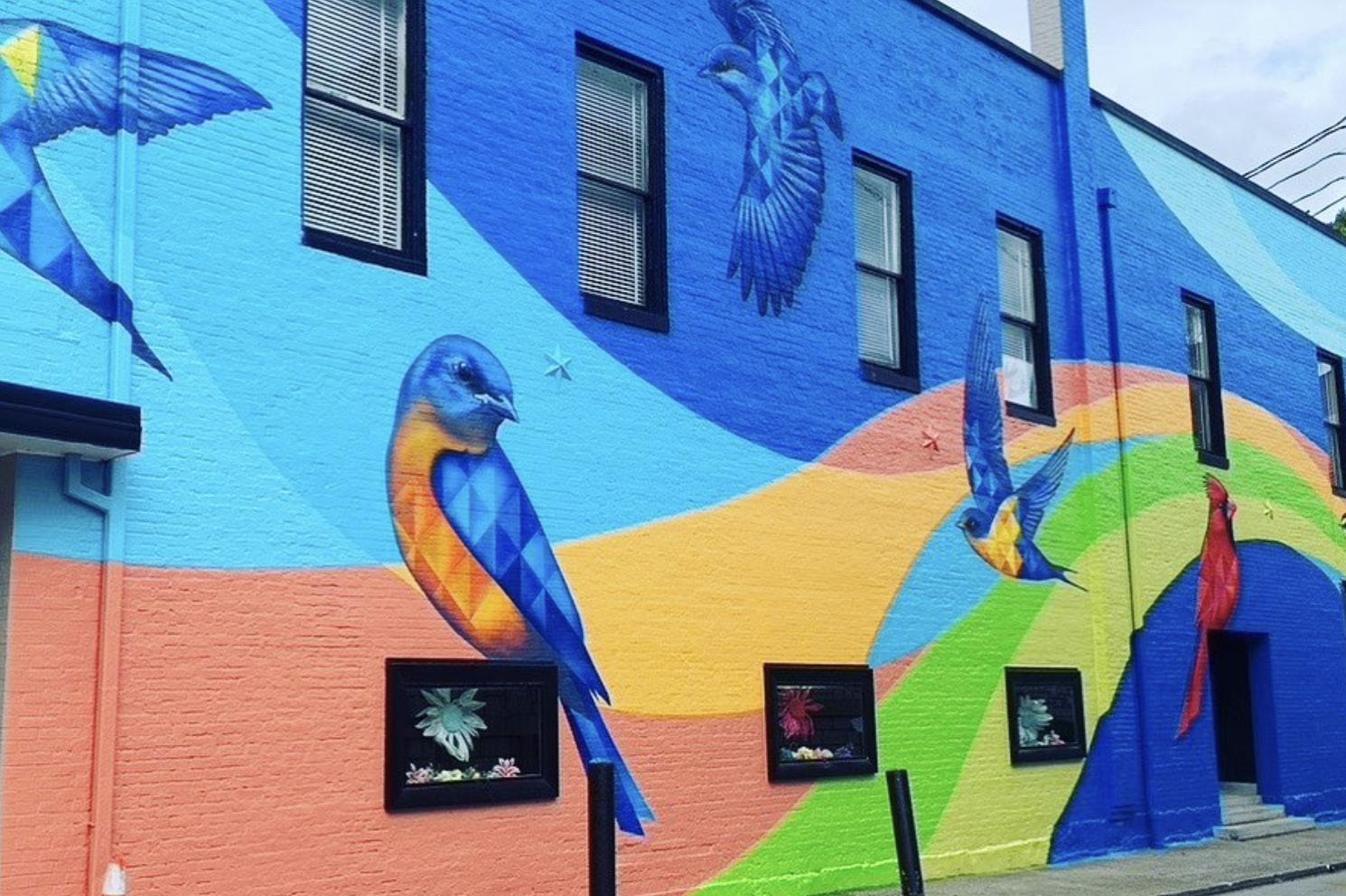
Silo Artwork
The historic Silos at Lafayette and Court Streets present a unique opportunity for an iconic mural that celebrates South Town’s history through a contemporary perspective. A mural on the Silos would also serve as a landmark in town, and offer a high visual impact from the newly-built hotel on Court Street. As a magnet toward South Town, the Silo Mural is a public art opportunity that is unique to South Town, and speaks to South Town’s casual, fun atmosphere. Unlike more conventionally-placed murals in South Town, the Silo mural will be a site-specific, long-term opportunity for an iconic, awe-inspiring artwork.
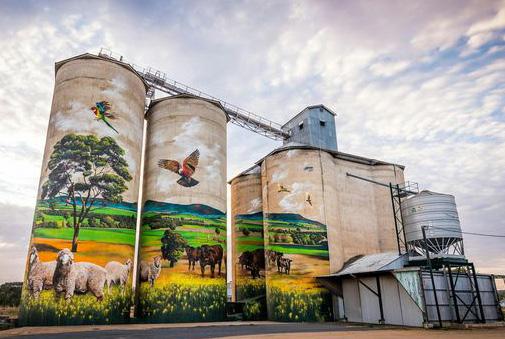
Suspended artwork can be made from a number of materials with varying lifespans, making it an exciting strategy to transform a conventional gathering site— such as a re-imagined alley or a municipal park—into an extraordinary, wondrous place for leisure or respite. To install a suspended artwork or sculpture, permission from neighboring property owners may be required, if the suspension infrastructure is to be placed on their property. These artworks are most effective in pedestrian-only spaces so that artwork visitors can safely photograph and marvel at the artwork above.
If the infrastructure to hang the artwork up exists, there is an opportunity to be creative in the choice of suspended artwork. This could rotating pieces by local artists, competition for the artwork, or fun callbacks to Medina’s history.
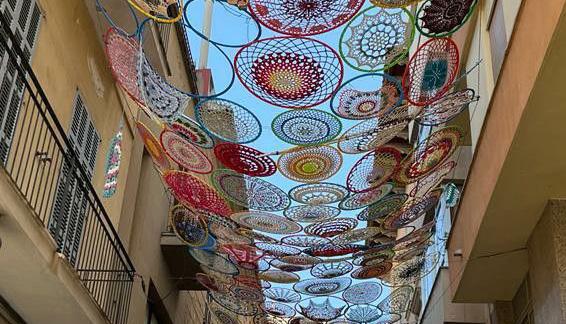
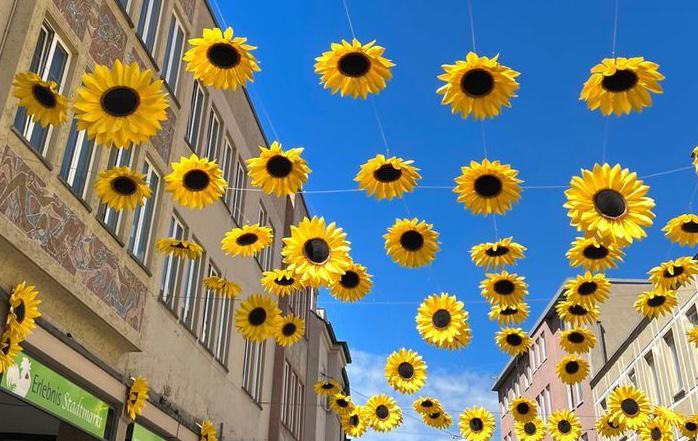
Artists use lighting in creative and interesting ways in order to manipulate the built environment with limited physical impacts. Light installations may be used on existing buildings, in parks on substantial landscape features, or as part of a larger installation of sculpture. They may be especially useful and impactful when used in infrastructure projects. Projections could rotate at regular intervals (biennially, seasonally, etc.), and could present exciting opportunities for accompanying programming.
As South Town continues to grow, construction fences in the public right-of-way are an opportunity to beautify and draw foot traffic into the area. Construction fence art is an accessible, low-cost art-making opportunity for artists of all ages and abilities, working in any medium. This type of program is also effective to engage community groups or school-age children in the public art process. This kind of program would require a clearly defined process, which could be adapted for future public art needs and opportunities
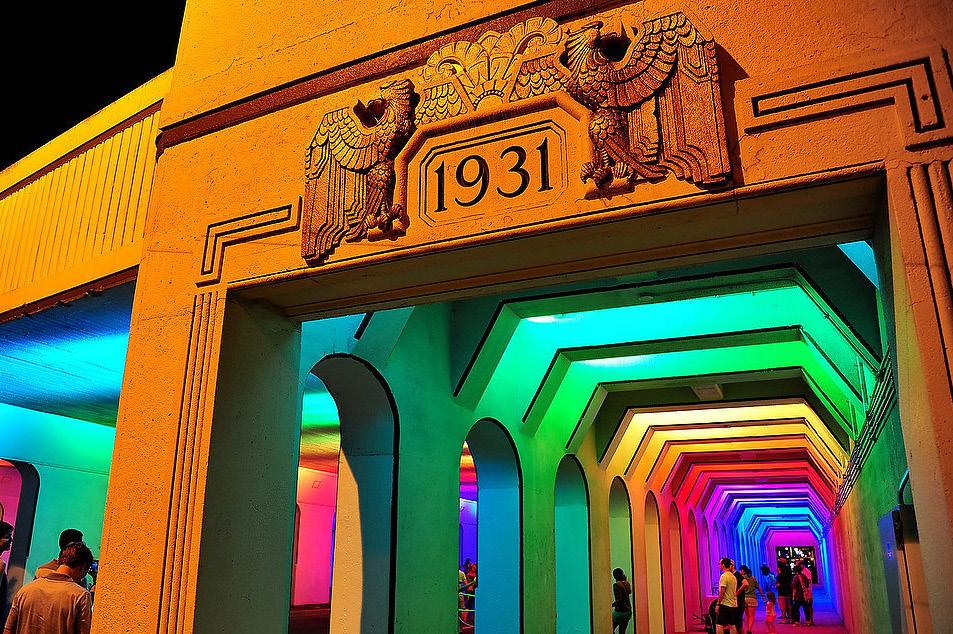
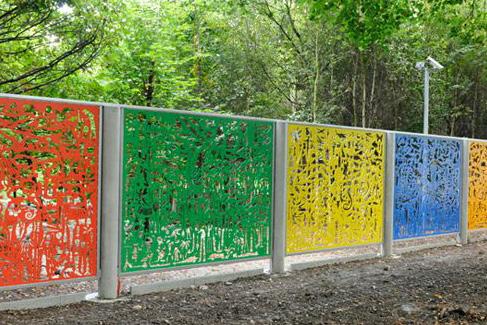
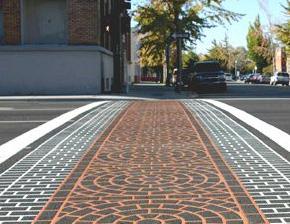
Placemaking efforts in South Town can shape the neighborhood’s own unique identity. The projects recommended below aim to drive pedestrian traffic into South Town by making it a more enjoyable promenade, or even a place for relaxation and fun. Increased pedestrian traffic can bring other positive effects like stronger feelings of safety, or improved success among area small businesses. Through placemaking, South Town can become a place of pride and celebration.
Rollaway bollards for placemaking at Mill St. Mill Street connects the center of South Town with the Champion Creek Multipurpose Trail and Court Street, Medina’s main thoroughfare into Uptown. Implementing placemaking infrastructure on Mill Street will allow for enhanced walkability and programming that is accessible to residents of all ages. Installing rollaway bollards on Mill Street establishes the site as a temporary or permanent promenade, which could be used for street fairs, performances, and beyond.
A Parklet is a sidewalk extension that offers pedestrians amenities for shade, leisure, or rest. Parklets can be installed within parking spaces, or they can extend into a street at the level of the sidewalk. Planter boxes or trees can be built into permanent parklets, offering an opportunity for nature within an urban or industrial area. Parklets placed within South Town Medina can be inviting resting places for pedestrians and tourists alike.
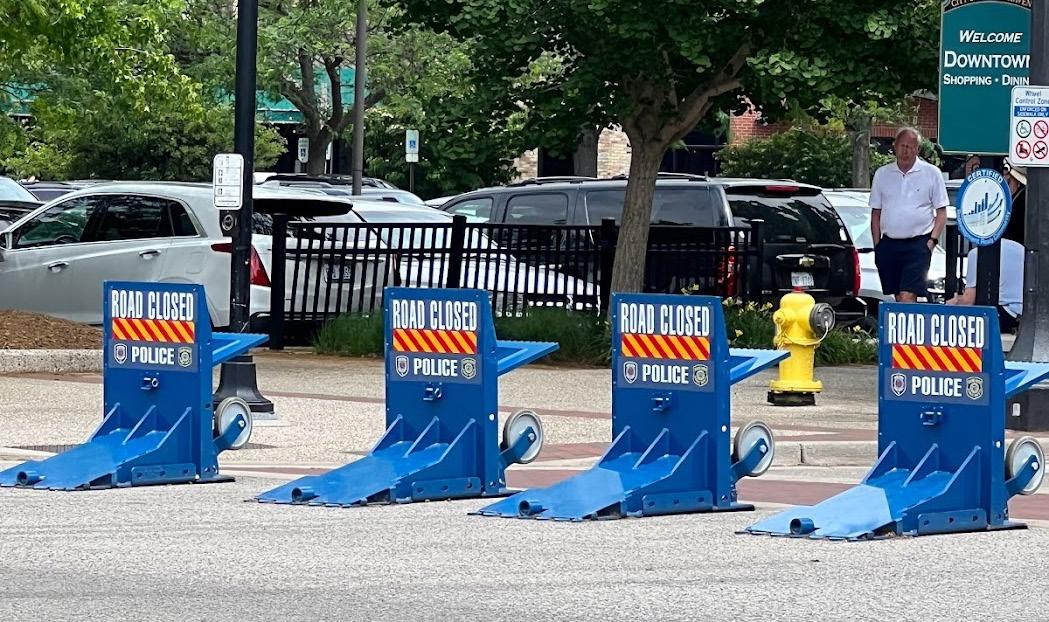
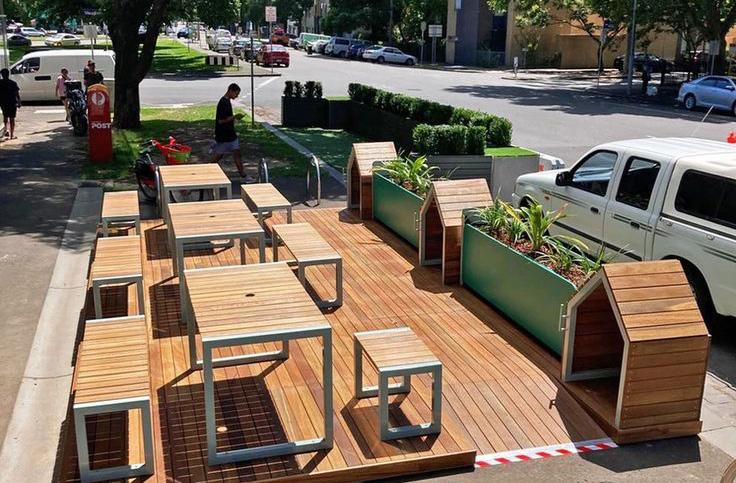
Artist-design planters and site furnishings, such as benches or dining furniture, offer a unique approach to what could be seen as ordinary features of public spaces. These iconic, artist-designed furnishings are an opportunity for South Town Medina to merge public art with placemaking through unique amenities, which would be visually distinct from the more traditional furnishings in Uptown Medina. Artist-designed placemaking features can be permanent or temporary, and broadly or narrowly installed, in order to establish the desired boundaries of a site.
Consistently-branded interpretive signage featuring QR codes is an opportunity for South Town to share its past in an eye-catching, educational way. Signage could extend into Uptown Medina to celebrate the districts’ dynamic historices, while also maintaining the distinction between their aesthetic characteristics. Interpretive signage could also include reimagined, artist-designed historic photos or images, uniting Medina’s vibrant past with its future.
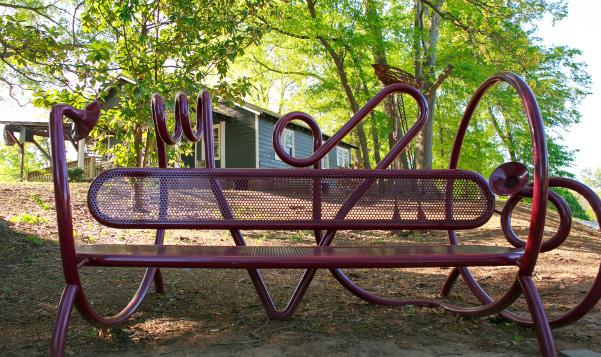
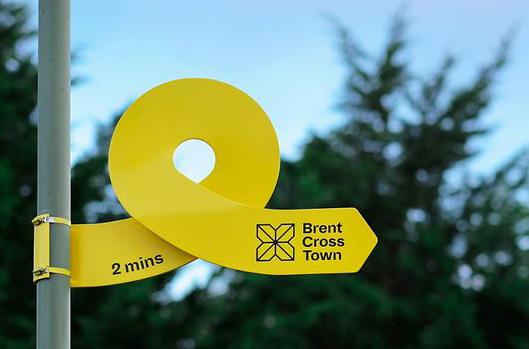
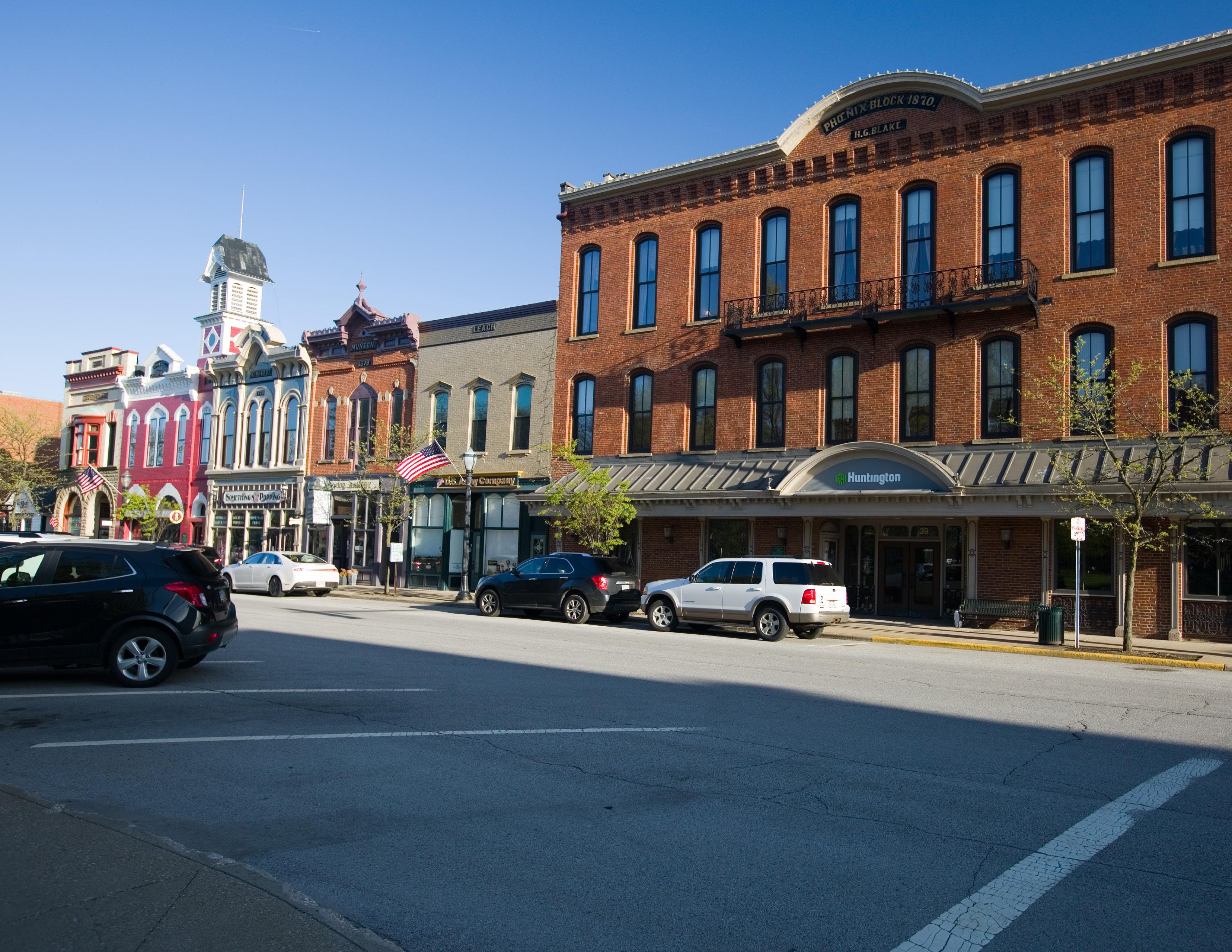
A suite of creative programs can support the intended outcomes of the Main Street Medina Public Art and Placemaking Plan. These programs include:
• Regular competitions for rotating commission at the Silos
• Maker Markets
• “Promenade hours” to limit certain streets to pedestrian traffic only
• Lighted Art programming or festivals
A robust set of policies to support Main Street Medina’s public art program will direct the program vision and ensure consistency in procurement practices, maintaining its commissions through longterm planning and maintenance, governing the program with strong public trust, and providing clear direction for artists, private developers, and donors to follow when participating in the program. Main Street Medina encourage its partners with the City of Medina to support the development of sound, equitable public art policies that will:
• Establish a definition for public art
• Create a Public Art Acquisition Account
• Develop processes for public art to be commissioned
• Adopt the Public Art Master Plan
• Public Art Program Introduction
Public Art Program Introduction
This policy establishes the mission, vision, and guiding principles for the program as well as overall definitions for the policy.
Use of Funds Policy
This policy outlines appropriate and inappropriate uses for the Main Street Medina’s public art fund. Main Street Medina’s Public Art Policy is outlined in a separate policy.
Acquisition Policy
This policy establishes the procedures for the acquisition of public art. This policy applies to the procurement of both existing artwork and newly-commissioned artwork.
Collection Management Policy
This policy establishes the management practices of artworks acquired through the solicitation and donation processes. These pieces are considered part of the Main Street Medina’s Permanent Collection and must be cared for in accordance with the Policy and Procedure for Maintenance Policy and the Collection Management Policy. The Collection Management Policy is intended to maintain the value of the Main Street Medina’s Permanent Collection and guard against inappropriate disposal of any of its pieces.
Donation Policy
This policy establishes the donation process for artworks not commissioned by Main Street Medina, including donation requirements and the responsibilities of the donating party. Each proposed donation must come with a plan to fund and deliver ongoing maintenance, or the resolution accepting the public art must identify how maintenance of the donated public art will be funded.
Maintenance Policy
This policy establishes the procedure for the maintenance of the future art collection. Direction for surveying the collection, working with future artists to establish a maintenance plan for any commis-
